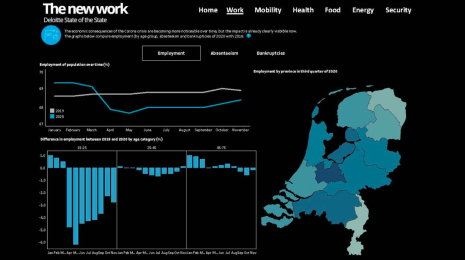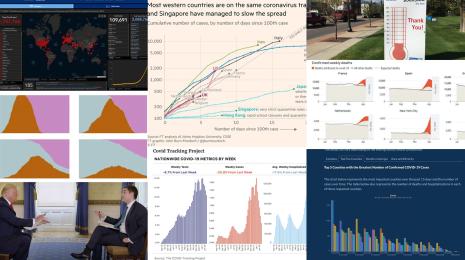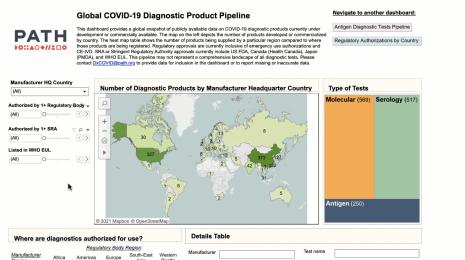When COVID-19 forced closures, St. Mary’s Bank leaned on data to plan their crisis response
During the COVID-19 pandemic, as shutdown orders were rapidly evolving, St. Mary’s Bank closed in-branch banking at all credit union locations, and had to quickly pivot to accommodate drive-up transactions. Learn from VP of Business Analytics about how the credit union used data to drive their crisis strategy.

I’ve worked for a credit union for just over five years. At the beginning of this global crisis, when I learned that we would remain open and that we are considered “essential business,” it made me think a little deeper about what that really means, and why that is the case.
I work for St. Mary’s Bank, the first credit union in the U.S., which serves more than one million members via nine branch locations. My team builds, implements, and maintains a data structure to support our production operations, and provides analytics that allow our leaders to make data-driven decisions. It’s interesting and exciting work, especially as the industry so quickly evolves with respect to the volume of data and the tools available to analyze that data.
During the COVID-19 pandemic, as shutdown orders were rapidly evolving, St. Mary’s Bank closed in-branch banking at all credit union locations, and had to quickly pivot to accommodate drive-up transactions. Our organization had to react carefully, but swiftly, ensuring that we maintain excellent service to our membership.
Leadership made moves to ensure the safety of staff, team leaders juggled responsibilities to handle the influx of refinance requests, branch staff expanded support at drive-up teller stations to serve our members while branch lobbies are closed, and our IT department worked long hours to set up a virtual home environment for our contact center representatives and other key personnel. And for all of these adjustments, we relied on data to guide our response. In this post, I’ll share how our existing data processes have kept us nimble during this challenging time—and some things we’ve learned so far.
Anticipating member needs & tracking hour-by-hour credit union transactions
For the past five years, alongside a dedicated technology partner and a supportive management team, St. Mary’s Bank has been building and deploying a robust enterprise data warehouse and enforcing our version of a “single source of truth.” We’ve built dashboards and reports—some well received, some not—and we’ve centralized the delivery of data requests and access along the way. It’s been a productive five years.
"So what does this mean in a time of crisis? It means that when our departments need to make critical decisions, we can quickly provide objective, meaningful data to help guide those decisions."
As we operate with a reduced staff and closed lobbies, it was essential that St. Mary’s Bank could determine how we staff each drive-up location. Leveraging trusted data from our data warehouse, analysts could create an hour-by-hour Tableau transaction dashboard, using already-conformed data made available by our data governance process. This dashboard shows how many transactions are performed at each location, and also identifies the types of transactions that members require during this unprecedented time.
We can also filter to see the data by age group, geography, product mix, etc. This allows leadership to make data-driven decisions by anticipating member needs.
Handling an increase in credit union loan applications
Due to the federally-funded Paycheck Protection Program offered to small businesses during this time, St. Mary’s Bank’s commercial loan application volume has grown exponentially. The St. Mary’s Bank data team once again stood up a new dashboard that provided an at-a-glance view of an applicant’s overall financial relationship, allowing our staff to process applications at a faster rate.
Instead of searching three different systems for multiple data elements, a processor can simply access all of the relevant applicant information via one Tableau dashboard. This turned a very time-consuming, manual process into a much more efficient one—allowing St. Mary’s Bank to help their business members as quickly as possible.
In addition to front-line member services, St. Mary’s Bank’s back office processors needed to modify internal processes to adapt to both increased volumes and changes to regulatory requirements. When our Director of Mortgage Lending requested workload prioritization support for processors, underwriters, and management teams, we leveraged existing reports to provide individual data extracts, combining data from multiple data sources. Departments were able to sort and filter these extracts based on their specific workflow requirements, allowing them to work as efficiently as possible.
Supporting employees and moving forward together
In a time like this, when quick, accurate decisions can have both an immediate and lasting impact, I’m glad we’ve invested in our data solution and in nurturing our Data Culture. Mostly, I’m proud to be part of an organization that comes together during a challenging time, and remains committed to providing excellent service to our valued membership.
So what have we learned so far? Our team has learned where to step in and offer leadership where we can. We’re also working to keep morale where it needs to be and ensure that our hard-working staff feel appreciated and respected. Because at the end of the day, data is nothing without people.
Watch the webinar, COVID-19 Analysis for Financial Services, to learn how other financial services organizations are leveraging data in crisis. For more stories, visit the Leading through Change resource page.








